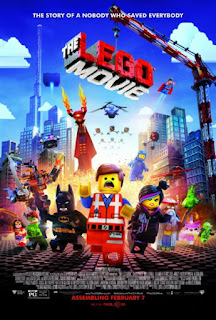Film Review: Alfred Hitchcock's "Rope" (1948)
Figure 1. ‘Rope Movie Poster'
What has to be one of the masters of suspense filled movies, Alfred Hitchcock’s “Rope” (1948) is certainly a theatrical performance that will draw the audience in, push them away, and draw them in once again.
Figure 2. 'Viewing the killing'
Based on a single set of a lavish apartment, “Rope” (1948) is a rather audacious film about a subtly-hinted-about homosexual couple who commit the act of murder within this apartment, and then host a dinner party with the victims loved ones whilst the corpse is hidden in a nearby chest. The terms ‘theatrical’ and ‘audacious’ come to mind when watching this film, as it is portrayed to the audience with an exaggerated manner, acting-wise, much like a play production being executed on a live stage. By live, it is also being referred to the fact that there are no jump cuts within the film (or so it may seem), just one prolonged take. The cameras movements are hardly smooth, they are somewhat unsteady and have a tendency to waver. As Pamela Hutchinson observes, “This clunkiness can be part of the film's claustrophobic strength though: the coffin-chest is rarely out of shot, and the camera follows the actors around every square inch of the confined set. They're trapped, and so is the audience.” (Hutchinson, P. 2012)
Figure 3. 'Brandon and Philip being questioned by their former tutor'
The audience is certainly made to feel a bit on edge, but that is what Hitchcock wants to achieve in his work. Hitchcock wants to torture the audience and have the suspense ‘kill them’. The effect of creating this piece using (or creating the illusion of) real time is daring, therefore it leaves the audience constantly waiting until the point where they shout towards the screen, “They’re going to find out!”. As Vincent Canby states, “In ''Rope,'' Hitchcock is less concerned with the characters and their moral dilemmas than with how they look, sound and move, and with the overall spectacle of how a perfect crime goes wrong.” (Canby, V. 1984) Much like the main character Brandon, who was one half of the pair who committed the murder, Hitchcock thought himself to be rather clever. He and Brandon thought of murder as an art form that had to be executed perfectly, hence ‘the perfect crime’, and all just to prove their intellectual superiority. In a way, they both may have possibly wanted to be discovered.
Figure 4. 'The ending shot'
Although it may not be Hitchcock’s most popular piece of work, but it’s the technique of how it was plotted that grabs the attention. When discussing the genre of murder mystery, one is compelled to normally think as to how the crime was committed, but less so to think of the consequences and the aftermath. As Robert Snow observed, “The difference is, it is a murder mystery seen from a different perspective – that of the perpetrators – and so the suspense in the movie is not generated by a lack of information about the killers, but by whether or not the murderers will be found out.” (Snow, R. 2011) By viewing the crime within the first shot, and then gazing into the private lives of the criminals, we discover what could possibly be going on from the committee’s point of view. Their thoughts and emotions are displayed within the private moments between the two main characters, showing the audience an experience that’s not usually displayed in features such as day time crime drama television. Even the subtle hint of the flashing neon sign facing opposite the window of the infamous apartment triggers the audience’s brains to then think of the danger of the situation when the murderers are caught by their former prep school tutor.
What’s special about this feature is that it’s allowing us to consider that there are indeed consequences to our actions, and that not everyone can get away with committing a crime, even if it was ‘perfect’. An overall impressive piece by an inspirational director.
Bibliography:
Canby, V. (1984) ‘Hitchcock’s “Rope”: A Stunt to Behold’ (03.06.84) In: http://www.nytimes.com/ (1984) [Online] At: http://www.nytimes.com/1984/06/03/movies/hitchcock-s-rope-a-stunt-to-behold.html (Accessed on 16.01.15)
Hutchinson, P. (2012) ‘My Favourite Hitchcock: Rope’ (27.07.12) In: http://www.theguardian.com/ (2012) [Online] At: http://www.theguardian.com/film/filmblog/2012/jul/27/my-favourite-hitchcock-rope (Accessed on 16.01.15)
Snow, R. (2011) ‘Reviews of Classic Movies: Hitchcock’s “Rope”’ (17.08.11) In: https://robertsnow.wordpress.com/ (2011) [Online] At: https://robertsnow.wordpress.com/2011/08/17/review-rope-1948/ (Accessed on 16.01.15)
Illustrations:
Figure 1. ‘Rope Movie Poster' (1948) [Poster] At: http://lans-soapbox.com/wp-content/uploads/2013/09/rope.jpg (Accessed on 16.01.15)
Figure 2. 'Viewing the killing' (1948) [Movie Still] At: http://cloud.lomography.com/576/435/d6/26fc9a9cb140c0fe7347d5d93fe9b4dcf9850a.jpg (Accessed on 16.01.15)
Figure 3. 'Brandon and Philip being questioned by their former tutor' (1948) [Movie Still] At: http://culturewars.org.uk/images/Rope.bmp (Accessed on 16.01.15)
Figure 4. 'The ending shot' (1948) [Movie Still] At: https://blogger.googleusercontent.com/img/b/R29vZ2xl/AVvXsEgXAT5IfUqbQFFeBI1g4vzwRKBrjF0DPvmWPkFUn2qC9yyJv7o4rqT0H9Le-SDOgVdpf0a6ddMYpk6ORNV1CfRM2WfuHkakarCvgOexqGUHx-QUwBSMIfNDDPDSnXk1EPkeqWD-NUW4WkDQ/s1600/rope_ending.jpg (Accessed on 16.01.15)







Nicely thought through Chelsea :)
ReplyDeleteYep - good choice of supporting evidence too.
ReplyDelete